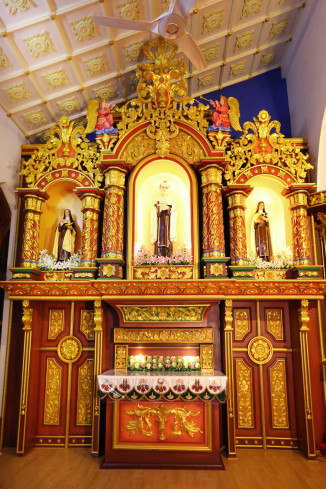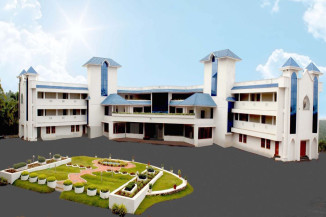HISTORY
The Congregation of the Carmelites of Mary Immaculate (C.M.I.) was started by three illustrious priests of the Apostolic Church of St Thomas Christians in India. These Founders were Rev. Fathers Thomas Palackal, Thomas Porukara and St Kuriakose Elias Chavara.
They were assisted by Jacob Kanianthara who joined the Congregation as a brother co-operator. The Italian Carmelite Bishop, Maurilius Stabilini O.C.D., who was governing the St Thomas Christians of Kerala at that time, granted permission to start this religious Congregation. The foundation stone for the first monastery at Mannanam was laid on 11th May 1831. The first two of the Founding Fathers passed away in 1841 and 1846 respectively.
CANONICAL FOUNDATION
On 8th December 1855, the Religious Community at Mannanam became a canonically recognized Religious Congregation with the religious profession of the first batch of eleven priests headed by Fr Kuriakose Elias Chavara. On this occasion the name assumed by the Religious Community at Mannanam was “Congregation of the Servants of Mary Immaculate of Mount Carmel”. Fr Kuriakose Elias Chavara, the first “Prior” of the Congregation passed away with the odour of sanctity on 3rd January 1871. He was declared “Blessed” by Pope St John Paul II on 8th February 1986 at Kottayam, Kerala. He was canonized as “Saint” by His Holiness Pope Francis on 23rd November 2014 at Vatican.
Since the Latin missionaries of the Order of Carmelites Discalced (O.C.D.) were guiding the Congregation started at Mannanam during its early period, Latin Carmelite tradition had influenced the congregation from the very outset. In 1860, the General Chapter of O.C.D. in Rome affiliated this new Religious Congregation of the Oriental Rite to itself and gave it the name T.O.C.D. (Third Order of Carmelites Discalced). It was granted Pontifical Status in 1885.
The name of the Congregation was changed to C.M.I. (Carmelites of Mary Immaculate) with the approval of its revised Constitution by the Holy See in 1958. C.M.I. Congregation was given Pontifical Exemption in 1967.
ACTIVITIES
The Congregation was involved from its beginning, in such activities as the Church in Kerala was in need of at particular times. It started with preaching retreats and conducting seminaries for training priests. The members met the challenge of educating the youth and disseminating Christian literature, laboured for the conversion of non-Christians and for the reunion of the separated brethren among St Thomas Christians and undertook works of mercy and started charitable institutions.
The mission work of the C.M.I. Congregation gathered new dimension and momentum as mission territories beyond the boundaries of Kerala were entrusted to it from 1962 onwards to expand the Syro-Malabar Church.
DIVISION INTO PROVINCES
The C.M.I. Congregation, which had been under the direct administration of the Prior General, was divided into three Provinces on 2nd March 1953 for administrative efficiency. Later on, as members and activities increased, further divisions became necessary. At present the Congregation has fifteen Provinces, and four Mission Sub Regions.
BIFURCATION OF THE PROVINCE OF ST JOSEPH
The St Joseph’s Province was spread out over the vast southern area of Kerala coextensive with the area of the Dioceses of Changanacherry and Palai of that time. As activities of the Province became too numerous and the administration too unwieldy, it was bifurcated into two provinces namely St Joseph’s Province, Kottayam and St Joseph’s Province, Thiruvananthapuram in 1979.
ST JOSPEH’S PROVINCE, THIRUVANANTHAPURAM
The territory of St Joseph’s Province, Thiruvananthapuram is almost co-extensive with the territory of the Archdiocese of Changanacherry and that of the Diocese of Thuckalay except part of the foranes of Athirampuzha, Nedumkunnam and Manimala. It geographically comprises the revenue district of Kanyakumari in Tamilnadu and the revenue districts of Thiruvananthapuram, Quilon and major portions of the revenue districts of Pathanamthitta, Alleppey and Kottayam.
At present the area covering the revenue district of Kanyakumari, co-extensive with the Diocese of Thuckalay, is a Sub-Region of the Province. Another Sub-Region of the Province is the Kolkata mission region which comprises the areas of the Archdiocese of Kolkata and that of the Diocese of Baruipur.








; ?>/wp-content/uploads/2023/03/cmi7.jpg” class=”img-fluid” alt=””></div>
<div class=)



